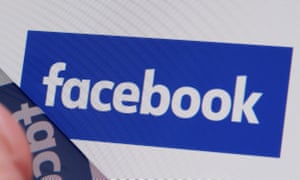1) Why did Laura Bates start the Everyday Sexism project?
Laura Bates started the project to inform people that sexism is still an issue in today's society despite the progressions made in previous decades. She had real life examples of where females were discriminated, specifically by males, which made them feel as if they were the problem.
2) How does the Everyday Sexism project link to the concept of post-feminism? Is feminism still required in western societies?
The project links to the concept of post feminism because it provides evidence as of why feminism should still exist in society. This is because women are being mistreated in public and even in formal environments like in the workplace. So feminism is required to ensure that women aren't being objectified but extreme feminists need to become less radical.
3) How can you apply Judith Butler's theory of gender as a 'performance' to the creation of the Everyday Sexism project?
Judith Butler's theory can be applied because the project depicts the ways society perceive females and it is based on the appearance of them. For example, feminist would suggest that society believes a female's role in society is to look 'sexy' for males, which also links with Laura Mulvey's theory of the male gaze, so this is why people find it the norm when females are constantly judged on their appearance.
4) How does Angela McRobbie's work on female empowerment link to the Everyday Sexism project?
This links with the Everyday Sexism project because the way some females act reinforce the feminist stereotypes of society which is males objectifying women. This is because some females act in seductive and sexual ways in media texts which means males are influenced into discriminating women because their favourite hip hop and R&B artists are portrayed this way.
Media Magazine: The fourth wave?
Read the article: The Fourth Wave? Feminism in the Digital Age in MM55 (p64)
1) Summarise the questions in the first two sub-headings: What is networked feminism? Why is it a problem?
Networked feminism - feminism is often divided into 'waves' to explain the cultural context in which they began:
- first wave - 19th to early 20th centuries, main focus on suffrage
- Second wave - 1960s, campaigning for the growth of equal rights and leading to equal pay (70s)
- Third wave - late 1990s, often identified as post feminism
- Fourth wave - tackles social inequality issues, especially through technology
Ordinary people have user generated content websites where they can share these feminist thoughts.
2) What are the four waves of feminism? Do you agree that we are in a fourth wave ‘networked feminism’?
- first wave - 19th to early 20th centuries, main focus on suffrage
- Second wave - 1960s, campaigning for the growth of equal rights and leading to equal pay (70s)
- Third wave - late 1990s, often identified as post feminism
- Fourth wave - tackles social inequality issues, especially through technology
In the text, it says society is trying to tackle social inequality issues found both on, and using, modern technology. Hashtags and blogs have been created to spur on the feminist upheaval. So based on this, I believe we slightly do live in the fourth wave where inequalities are still being negatively portrayed by the media.
3) Focus on the examples in the article. Write a 100-word summary of EACH of the following: Everyday Sexism, HeForShe, FCKH8 campaign, This Girl Can.
Laura Bates started the Everyday Sexism project to inform people of the inequalities in society today and wants to ensure females rights are as secure males. She had real life examples of where females were discriminated, specifically by males, which made them feel as if they were the problem. 'He For She' which campaign is led by Emma Watson and she focuses on male support for gender equality. Its a digital campaign and generated a huge response; Watson has decided to use Twitter (where she already has a large following) for a Q&A campaign deciphering the issue. The campaign has apparently undermined the strong woman and feminism has become more reliant on men.
4) What is your opinion with regards to feminism and new/digital media? Do you agree with the concept of a 'fourth wave' of feminism post-2010 or are recent developments like the Everyday Sexism project merely an extension of the third wave of feminism from the 1990s?
I believe feminism of post 2010 is in the fourth wave as women are being discriminated so much so that most of the public can't see it anymore and believe its the norm. This could explain why audiences believe feminist are really repetitive as they are constantly displaying the issues with society and sexism but no one wants to listen. So feminist have now turned to digital media to gain a better audience who would be able to view their beliefs and ideologies which is much more convenient than people having to watch/listen to a speech on the television. There are examples on social media and social experiments to assess how society as a whole treats women as inferior which shows we are still working on the development of gender equality. So Emma Watson's campaign should be successful due to the use of technology which all kind of audiences use.

